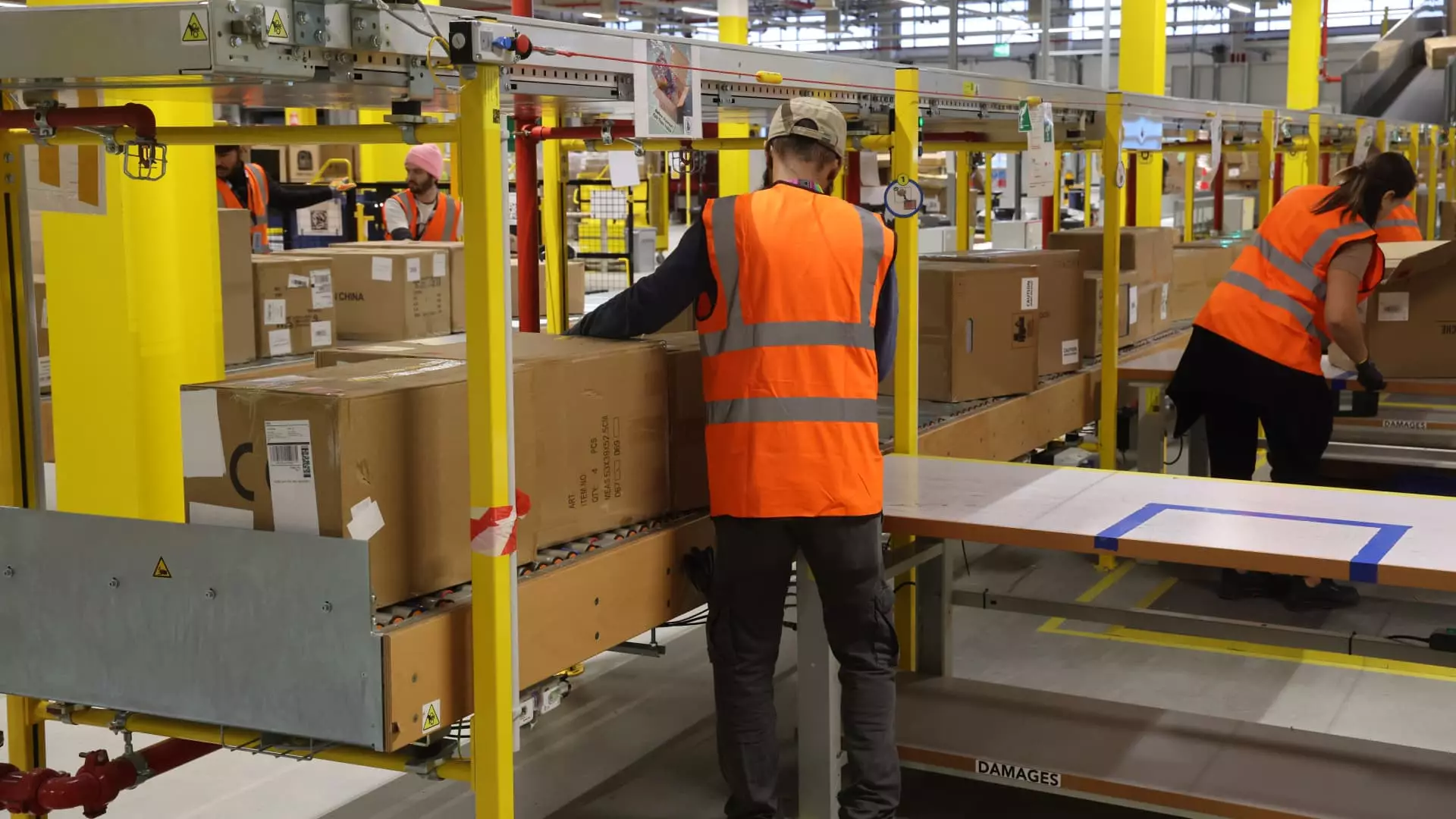In a bold move that signals a future shaped by automation, Amazon recently announced that it has deployed its one-millionth robot across its extensive global network. This milestone is not just a number; it represents a seismic shift in how industries operate. By integrating AI-powered robots into its fulfillment centers, Amazon aims to maximize efficiency and cut costs in a fiercely competitive retail landscape. The company’s latest AI model, “DeepFleet,” promises to revolutionize warehouse logistics by optimizing robot movement, reducing travel times by 10%, and accelerating package deliveries. Such advancements showcase the technological ingenuity that underpins modern globalization but also reveal a concerning trend: the relentless march towards full automation at the expense of human employment.
While these developments seem impressive on paper, they should be viewed through a critical lens. Automation isn’t simply about productivity—it’s a double-edged sword that threatens to displace millions of workers who have long relied on manufacturing and logistics jobs for their livelihoods. Amazon, by positioning itself as an industry leader, is reinforcing its dominance not through innovation alone but by rewriting the employment landscape, favoring machines over people. The narrative that robots “create new opportunities” they justify as a silver lining sounds hollow when set against the backdrop of thousands of job cuts and shrinking workforce sizes.
Technological Progress or Workforce Evisceration?
The reality is, corporations like Amazon are walking a fine line between technological progress and social responsibility. The company claims its robots work alongside humans, handling heavy lifting and repetitive tasks, which ostensibly allows human workers to develop higher-skilled roles. However, the truth reveals a different story. For every Giga-factory of innovation, there are countless workers—those unskilled, lower-income employees—whose positions are increasingly vulnerable. The deployment of AI in fulfillment centers has already led to significant job reductions; Amazon alone eliminated over 27,000 positions in just the last two years.
This trend isn’t isolated. Major players across tech and logistics sectors are echoing similar sentiments, with some company executives openly acknowledging that AI and automation will reduce net employment figures. While the rhetoric from CEOs like Amazon’s Andy Jassy emphasizes future hiring in AI, robotics, and technical specialties, the reality is that the workforce will inevitably contract in areas susceptible to automation. Such admissions reflect a stark recognition that the capitalist model now favors efficiency over employment—an unsettling trade-off for millions who fear losing their livelihoods.
Furthermore, the notion that automation will open “new opportunities” is overly optimistic and arguably disingenuous. History demonstrates that technological shifts, such as the Industrial Revolution, have often resulted in short-term job displacement with only delayed or limited new job creation. The current wave of AI-driven automation may produce some specialized roles, but these tend to require high levels of education and technical skills, leaving behind a large demographic of workers with limited retraining options.
The Cost of Accelerated Innovation
The financial incentives for corporations are clear: automation reduces labor costs, accelerates production cycles, and enhances global competitiveness. But at what societal cost? As Amazon and others continue to expand their robotic fleets, the consequences extend beyond individual companies. Entire regions dependent on manufacturing and warehouse jobs risk economic destabilization. Communities that built their economies around employment in fulfillment centers are particularly vulnerable as automation tools become cheaper and more efficient.
Moreover, the narrative that increased automation will “free” workers from mundane labor ignores the social and psychological toll of widespread job loss. Unemployment leads to poverty, reduced consumer spending, and social fragmentation. It also raises troubling questions about social safety nets and the role of government in managing transitions. While tech moguls trumpet a vision of innovation as a force for good, the broader societal implications of unchecked automation threaten to deepen inequality and social divide—a consequence that the center-right liberal perspective must vigilantly scrutinize.
The discussion around AI and robotics should not be dominated solely by the allure of technological progress but must incorporate a sense of moral responsibility. Moderate approaches that promote technological advancement alongside policies to protect workers, provide retraining opportunities, and ensure fair economic distribution are essential. Otherwise, the relentless push for automation risks transforming society into one where innovation benefits only a small elite, while the majority bear the costs of progress.
This critical examination of Amazon’s automation surge reveals an uncomfortable truth: the pursuit of efficiency and profit often eclipses considerations of social stability and human dignity. As AI continues to reshape industries, careful oversight and balanced policy interventions are more urgent than ever to ensure that technological progress serves society as a whole, rather than only the interests of the few at the expense of the many.

